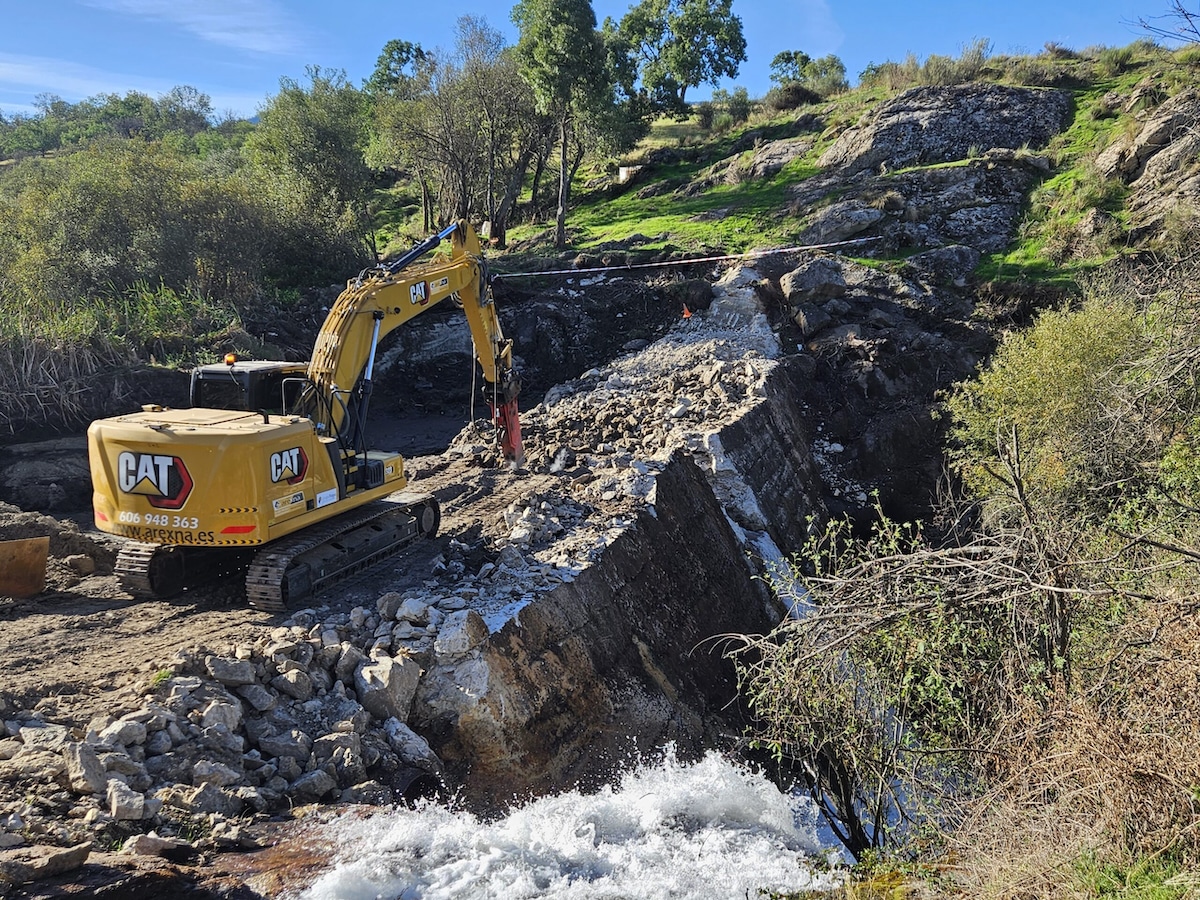Ecowatch
Europe Removed Record Number of Dams and Other Barriers to River Flow in 2023

The removal of Torreval Dam at Cega River, Spain in autumn of 2023. Pao Fernández Garrido / Dam Removal Europe

Why you can trust us
Founded in 2005 as an Ohio-based environmental newspaper, EcoWatch is a digital platform dedicated to publishing quality, science-based content on environmental issues, causes, and solutions.
In 2023, Europe removed a record 487 dams and other river barriers, according to a new report by Dam Removal Europe (DRE), a coalition of organizations including The Nature Conservancy, Rewilding Europe, Wetlands International and World Wide Fund for Nature (WWF).
The number of removals from waterways in 15 European countries was 50 percent more than the year before, a press release from WWF said. More than 2,671.9 miles of rivers were reconnected through the initiatives, restoring ecosystems and boosting climate resilience and biodiversity.
“It is amazing to witness another record-breaking year for dam removals in European rivers. Almost 500 barriers were removed, highlighting the growing support for river restoration to enhance water security, reverse nature loss and adapt to the worsening impacts of climate change,” said Herman Wanningen, World Fish Migration Foundation director, in the press release. “From France to Finland, communities, companies and countries are investing in removing obsolete and increasingly risky barriers to improve river health for people and nature.”
France led the way with barrier removals last year, with the winner from the previous two years — Spain — coming in second, followed by Sweden and its neighbor, Denmark.
The European Union Nature Restoration Law includes the EU Biodiversity Strategy’s dam removal target of restoring a minimum of 15,534.3 miles of rivers by 2030. However, the legislation did not pass the Council of the European Union and remains in limbo.
“The handful of EU countries that are blocking the Nature Restoration Law are also jeopardising the recovery and protection of our rivers, which ultimately will adversely affect us,” said Claire Baffert, senior EU policy officer of water and climate change adaptation at WWF, in the press release. “Across Europe, rivers are littered with often obsolete dams that worsen the health of the very freshwater ecosystems that are vital to providing clean drinking water for us, water for farming and for biodiversity.”
The report, Dam Removal Progress 2023, warns of safety risks presented by obsolete river barriers. Rivers in Europe are broken up by 1.2 million-plus barriers, 150,000 of which are obsolete and pose substantial dangers to wildlife and people.
“Obsolete barriers do nothing but harm the river, increase nature loss and pose a growing risk since they were built to cope with very different climatic conditions. It’s time to re-think the way we manage our rivers by removing all obsolete barriers and letting as many rivers as possible flow freely. A river that does not flow freely is slowly dying,” Wanningen said in the press release.
DRE collected information regarding risks posed by dams to recreational river users like kayakers and swimmers. It discovered 82 incidents resulting in 129 deaths in 16 countries. The victims ranged in age from two to 59 years old — most were in their mid-20s and mid-30s.
“Low-head dams (i.e., weirs) that are especially dangerous due to the formation of an inescapably strong subsurface current (submerged hydraulic jump) are usually called ‘drowning machines,’” the report said. “These structures have caused hundreds of fatalities in the U.S. in the last 20 years; more than any other kind of riverine barrier.”
The risk of any dam collapsing — especially aging and obsolete barriers — is increased by the more extreme flooding and intense storms caused by climate change.
“With tens of thousands of obsolete dams scattered across Europe, the potential for catastrophic failures is a growing risk for downstream communities. Indeed, at least three river barriers collapsed last year due to heavy rain in Norway, Northern Ireland, and Slovenia,” the press release said.
With a number of dam removal projects scheduled for this year, as well as a European dam removal movement network of more than 6,000 people, momentum has been growing.
“Several significant barrier removal projects are on the horizon for the near future,” the press release said. “Croatia is set to proceed with the removal of eight barriers, including parts of old mills and remains of older infrastructure, in Plitvice during April and May, with the aim of restoring natural river flow and biodiversity. Romania is also gearing up for its first barrier removal scheduled for May, a move anticipated to enhance river connectivity and ecosystem health.”
DRE said it wants to make dam removal “business as usual” throughout Europe.
“The support offered by DRE empowered practitioners to restore the connectivity of thousands of river kilometers in the past years, thereby enhancing freshwater biodiversity and enabling migratory fish to access their historical spawning sites after centuries. This impactful outcome was achieved not only through the removal of physical river barriers but also through dedicated and persuasive efforts to influence decision-makers and communities,” the report said.
Subscribe to get exclusive updates in our daily newsletter!
By signing up, you agree to the Terms of Use and Privacy Policy & to receive electronic communications from EcoWatch Media Group, which may include marketing promotions, advertisements and sponsored content.
Source
Disclaimer: No copyright infringement intended. All rights and credits reserved to respective owner(s).











